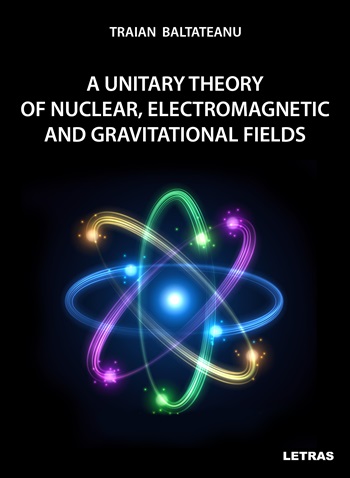Descriere
eBook PDF A unitary theory of nuclear, electromagnetic and gravitational fields – Traian Baltateanu – Editura Letras, 2024
Acesta este un eBook protejat cu DRM. Pentru a-l citi, descarca gratuit aplicatia Adobe Digital Edition.
This theory physically explains: relativity, gravity, mass, inertia, the notion of antiparticle and antimatter, gravitational waves, the fine structure constant, the formation and stability of atomic nuclei.
The theory provides researchers with the tools to create the structural model for all the nuclei of atoms and their isotopes, to calculate the resonance energy and frequency of nuclear couplings and nuclear reaction potentials.
The dipolar properties of nuclear interactivity open the perspective of the induction of negative gravity and the reduction of inertia of nuclear polarized bodies.
This paper proposes a new model, for elementary particles, different from the quark-based model of Quantum Chromodynamics. A particle model generated by the propagation of a photon in a circular orbit under conditions of gravitational singularity is proposed. The electric and magnetic properties of the photon are found in the particle and in addition, they induce: a nuclear moment and a kinetic spin moment.
For example, the electron thus defined is generated by a photon of Compton wavelength, has a kinetic moment equal to that known for fermions, and has a magnetic moment equal to the Bohr-Procopius magnetic moment.
The paper aims to demonstrate the connection between the properties of elementary particles and the macroscopic properties of matter, just as the connection between heat and thermal agitation was demonstrated. For this a unique system of units of measurement is defined for all levels and types of interaction based only on energy, space and time.
Coulomb’s law and Maxwell’s equations are generalized for any type of interactivity and for any distance, including total particle overlap.
The nuclear interactivity, now called the hard nuclear force, is induced by the rotor of the photon’s electromagnetic field, is responsible for the weight properties of the particle, and unequivocally defines the laws of nuclear interaction.
Nuclear interactivity is dipolar and each elementary particle has nuclear moment, magnetic moment and kinetic moment. Due to the spin kinetic moment and the nuclear moment, the particles in the nuclear field have precessional motion, which is the cause of the induction of a field which at the macroscopic level is the gravitational field. Precession is also induced by moving the particle at a certain speed, causing the photon to propagate in a spiral instead of a circle.
Nuclear momentum precession has a relativistic effect on the photon’s spin period, size, and mass by adding precession energy to rest energy. All the formulas from the theory of Special relativity and from the Theory of Gravitation are thus found.








Recenzii
Nu există recenzii până acum.